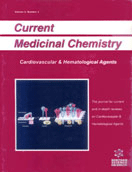Abstract
Co-localization of adrenomedullin (AM) and its receptor components such as calcitonin receptor like receptor (CRLR), receptor activity modifying protein (RAMP)2 and RAMP3 in peripheral tissues, including the heart, kidney, and vasculature, suggests an important role for the peptide as a regulator of cardiovascular function. Indeed, we previously reported that AM gene expression and / or immunoreactivity are increased in the ventricles of cardiac hypertrophy and heart failure. Recently, we also found that not only levels of AM peptide and AM gene expression, but also mRNA levels of CRLR, RAMP2 and RAMP3 are increased in cardiac hypertrophy and failing heart. Cardiac myocytes and fibroblast produce and secrete two molecular forms of AM and express CRLR, RAMP2 and RAMP3, and AM is known to have inhibitory effect of collagen synthesis and antiproliferative effect in cardiac fibroblasts. Stimulation by IL-1ß significantly increased gene expression of AM and its receptor components in cardiac fibroblasts. Preincubated IL-1ß elevated the intracellular cAMP response to exogenous administered AM. AM antisense oligodeoxynucleotide treatment significantly lowered AM levels in cultured medium. IL-1ß significantly increased 3H-proline incorporation and AM antisense oligodeoxynucleotide treatment further increased 3H-proline incorporation. Collectively, these results support a protective role for increased AM in the cardiac hypertrophy and heart failure. Then, we tested the effects of acute administration of AM in experimental and human heart failure, because AM has hemodynamic effects including vasodilation, increases in cardiac contractility, cardiac output, diuresis, and natriuresis. We observed profound and sustained cardiovascular, hormonal and renal effects. These effects may incorporate many of the therapeutic goals of heart failure management.
Keywords: adrenomedullin, hypertension, cardiac, hypertrophy, heart failure, fibroblast
 3
3













